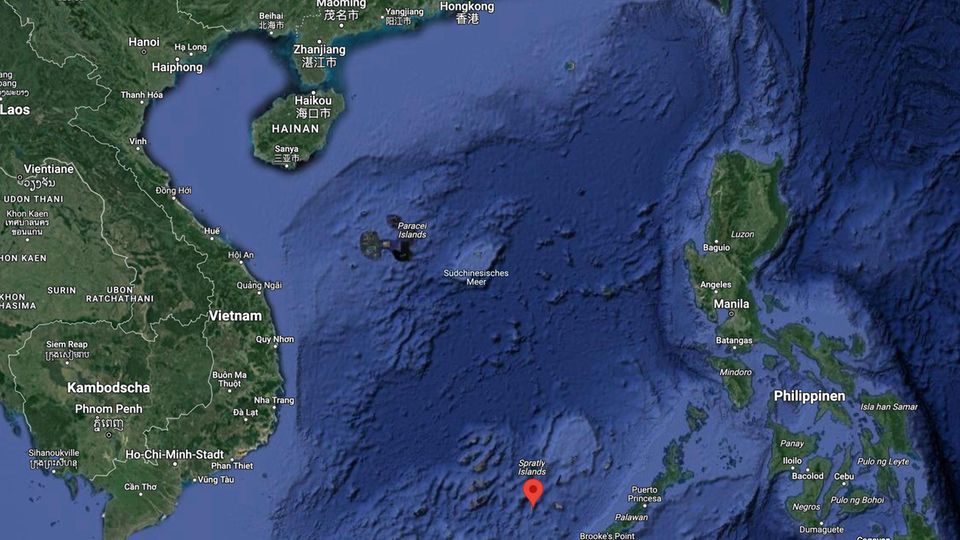South China Sea
Why a stranded warship is causing a dispute between China and the Philippines
The stranded warship BRP Sierra Madre has been a dispute between China and the Philippines for decades
© Ted Aljibe / AFP
The “BRP Sierra Madre” was already in action during the Second World War. In 1999, the Philippines intentionally stranded the warship – to show China the limits. Almost 25 years later, the action is still causing disputes between the two countries.
It looks like a wreck: rust on the hull, rust on the superstructure, rust everywhere. The white and black “57” on the military-grey bow is already peeling off. The “BRP Sierra Madre” lies at a slight angle in the South China Sea because it was intentionally grounded near the Spratly Islands in 1999. The flag of Philippines blows across the deck some 24 years later – and with good reason. With the action, the Philippines wanted and want to stop China’s spread in the South China Sea. A handful of Filipino marines are stationed on the rusting ship that served for the United States in World War II. They rely on regular supply missions to survive in their remote location.
One such supply trip led to an incident on Saturday: a Chinese Coast Guard ship aimed its water cannon at Philippine Navy boats. The attacked two Philippine ships had brought food, water and relief supplies for Filipino soldiers stationed there, it said on Sunday. Only one reached the “BRP Sierra Madre”, the other had to turn back. It was the second time since November 2021 that the Chinese Coast Guard used water cannons in the area against a Filipino supply mission. On the Chinese side, six coast guard ships and two military ships were involved, according to the Philippine side.
Several European countries and the United States had criticized Beijing’s actions after the alleged water cannon incident. The US State Department has said China is a direct threat to peace and stability in the region.
Dispute between China and the Philippines
The Chinese ambassador was summoned to the Philippines’ Foreign Ministry after the weekend’s incident, a statement said on Monday. The ministry has urged China to ask its ships to stop “illegal actions against Philippine ships and not to interfere with legal Philippine actions”.
Politicians, actors, business bosses
The Chinese who disappeared
China claims practically the entire South China Sea for itself. But Brunei, Indonesia, Malaysia, the Philippines and Vietnam also claim parts of the sea area, which is of great strategic and economic importance for the neighboring countries. Beijing is also fueling the territorial conflict by piling up artificial islands in the area and building military installations on them.

The “BRP Sierra Madre” has been stranded on the Second Thomas Shoal since 1999 – about 200 kilometers from the Philippine island of Palawan and more than 1000 kilometers from China’s nearest landmass, the Hainan Islands
© Screenshot Google Maps
The Philippines had “repeatedly made clear promises to tow away the illegally ‘stranded’ warship,” a Chinese foreign ministry spokesman said on Tuesday. After 24 years, Manila has not only not removed the ship, but “tried to repair it and fortify it on a large scale,” it said.
Warship in the South China Sea
China is urging the Philippines “once again to immediately tow the ‘stranded’ warship off Ren’ai Reef,” the Foreign Ministry in Beijing said, using the Chinese name for the atoll Second Thomas Shoal.

The final word on territorial claims in the South China Sea is far from over.
Further source:“South China Morning Post”.


